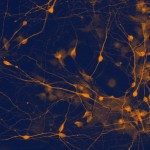Link to Pubmed [PMID] – 36879561
Link to DOI – 10.1016/j.banm.2020.09.039
Bull Acad Natl Med 2020 Dec; 204(9): e169-e177
Since the 1950s, the therapeutic arsenal against depression has grown considerably. From the discovery of mono-amine oxidase inhibitors (MAOIs) to the antidepressant effect of ketamine, several pharmacological breakthroughs made the history of psychiatry. These discoveries oriented the research about the pathophysiology of depression, which is one of the most disabling diseases worldwide affecting 10 to 20% of general population. In this article, we offer a short historical review of the various therapeutic options developed over the past century and the consequences of these innovations. We then review the discovery of the antidepressant effects of ketamine (and its S-enantiomer, esketamine), the lastest development in depression treatment. Ketamine’s effects are spectacular both in terms of their very short onset time, and because they are observed even in treatment-resistant depression. Just as MAOIs and tricyclic antidepressants allowed the “monoaminergic hypothesis of depression” to emerge, unravelling the mechanisms of ketamine’s antidepressant effects should highlight the role of glutamatergic system and neuro-inflammation in the neurobiology of depression. Ketamine might also help to refine our understanding of the cognitive pathophysiology of depression and to deeply transform the clinical representations of depressive disorder.Depuis les années 1950, l’arsenal thérapeutique permettant de lutter contre la dépression s’est considérablement enrichi. De la découverte des inhibiteurs de la mono-amine oxydase (IMAO) à celle de la kétamine, ces percées pharmacologiques ont marqué l’histoire de la psychiatrie et guidé la recherche sur la physiopathologie de la dépression, cette pathologie dévastatrice affectant entre 10 et 20 % de la population mondiale. Nous proposons dans cet article une courte revue historique des différentes options thérapeutiques développées au cours du siècle passé et des conséquences qu’ont eues ces innovations. Nous réalisons ensuite un état des lieux de la plus récente de ces découvertes, celle des effets antidépresseurs de la kétamine (et de son énantiomère S, l’eskétamine), spectaculaires de par leur délai d’action et leur efficacité même dans les formes les plus résistantes de dépression. De même que la découverte des IMAO et des tricycliques a permis de concevoir une théorie monoaminergique de la dépression, l’étude des mécanismes d’actions de la kétamine pourrait permettre de comprendre le rôle de la transmission glutamatergique ou de la neuro-inflammation dans la neurobiologie de cette pathologie, d’affiner nos connaissances sur sa physiopathologie cognitive, ou encore de transformer en profondeur les représentations des cliniciens sur cette maladie.

